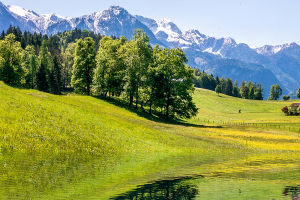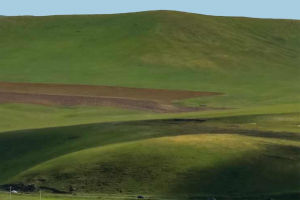The importance of nature reserves and protected areas in curbing the loss of biodiversity cannot be overstated.
A report released by the United Nations Environment Programme (UNEP) and the World Conservation Union (IUCN) on the state of nature reserves and protected areas shows significant progress has been made in the coverage of such areas, but more needs to be done to ensure their effectiveness and sustainability.
According to the report, the international community has added 42% of new protected areas over the past decade, meeting global targets for quantity but leaving much to be desired for quality.
Today, 22.5 million square kilometers (16.64%) of the world's recorded nature reserves and protected areas are terrestrial and inland water ecosystems, and 28.1 million square kilometers (7.74%) are coastal waters and oceans.
Globally, 65.5% of terrestrial and marine biodiversity critical areas have been partially or fully designated as nature reserves and preserves. On average, about 62.6% of biodiversity critical areas in individual countries/regions are fully or partially classified as nature reserves and preserves.
Since 2010, the network of nature reserves and reserves covers and represents an increasing number of ecosystem types around the world. Of the 821 terrestrial ecoregions, 44.5% have met the 17% target, while 47.4% of the 232 marine ecoregions have met the 10% target.
While the expansion of nature reserves and protected areas is commendable, the report notes that there is insufficient momentum to designate or consider setting more reserves.
Moreover, these reserves need to be managed effectively and governed equitably if they are to provide greater benefits locally and globally and create a better future for people and the planet.
It is not just the quantity but also the quality of these protected areas that needs to be improved.
The report highlights the need to protect intact areas and restore degraded ecosystems to build a natural network that can help halt and reverse biodiversity loss, maintain essential ecosystem services, help societies cope with and adapt to climate change, and reduce the risk of future pandemic outbreaks.
The UN Decade of Ecosystem Restoration initiative, which will be officially launched on World Environment Day on June 5, 2021, can reinforce the progress made in expanding the network of nature reserves and preserves.
Areas in the restoration phase are likely to be added to the network of nature reserves to ensure that the benefits of restoration are sustained.
The IUCN data shows that 15% of the world's total land area is considered protected land, while 10% of the world's water is considered protected land. Despite the large area covered by protected areas, some of the most important areas of biodiversity are not within protected areas.
This calls for urgent action to protect these areas. Countries need to work together to designate more protected areas and ensure that they are effectively managed and governed equitably.
This will require collaboration between governments, communities, and other stakeholders to address the underlying causes of biodiversity loss and support sustainable livelihoods.
While progress has been made in expanding the network of nature reserves and protected areas globally, more needs to be done to ensure their effectiveness and sustainability.
Countries must work together to designate more protected areas and manage them effectively to address the underlying causes of biodiversity loss and support sustainable livelihoods.


